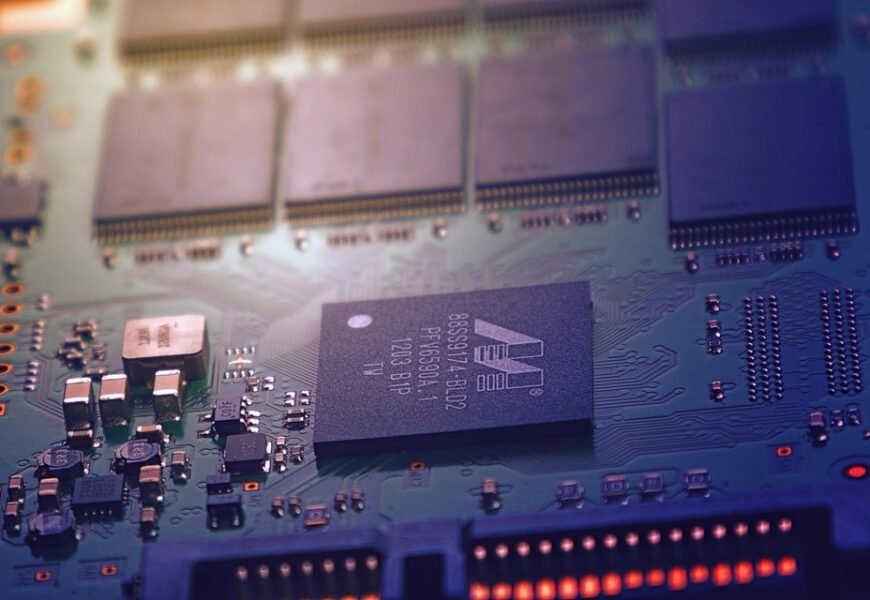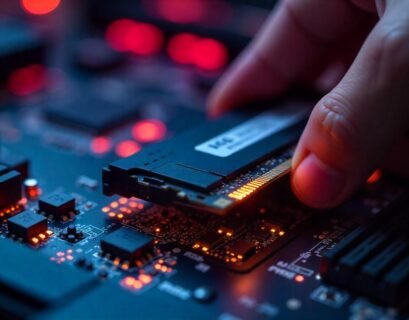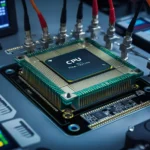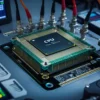Introduction
In recent years, the landscape of computer architecture has been evolving at unprecedented rates, with Arm chips emerging as a significant player. Traditionally dominated by x86 architecture from Intel and AMD, the CPU space has seen a tangible shift towards Arm processors, which have found their way into everything from smartphones to data centers. This article explores the reasons behind the rise of Arm chips, examines their innovative technologies, anticipates future trends, and discusses whether Arm architecture can be considered the future of CPU design.
A Brief History of Arm Architecture
From Humble Beginnings to a Powerhouse
Founded in 1990, Arm Holdings started with a vision to create a power-efficient architecture ideal for embedded systems. Initially, its chips were primarily found in mobile devices, where minimal power consumption was crucial. Arm gained traction, particularly with mobile manufacturers, due to its effective licensing model, allowing companies to build and customize their processors while retaining efficiency.
The first major breakthrough came with the advent of the smartphone era. As Apple’s iPhone, launched in 2007, popularized mobile computing, it showcased the performance and efficiency that Arm chips could offer. By the mid-2010s, Arm had solidified its presence in mobile computing, powering almost 98% of smartphones globally.
Expanding Beyond Mobile
As the industry matured, Arm chips began to penetrate other markets. With the advent of the Internet of Things (IoT), automotive technology, and even server deployments, Arm architecture’s power efficiency has become increasingly appealing. As the demand for cloud services expanded, tech giants began to explore Arm-based solutions, resulting in the development of sophisticated data center chips that can rival traditional x86 designs.
Technical Innovations Driving the Growth
Power Efficiency
One of the primary advantages of Arm architecture is its emphasis on power efficiency. The reduced instruction set computing (RISC) philosophy employed by Arm means that its chips execute fewer instructions compared to the complex instruction set computing (CISC) architecture of x86 processors. This efficiency is not only critical in mobile devices but is increasingly important in large-scale data centers, where energy consumption costs can substantially impact overall operational expenses.
Scalability and Customization
Arm’s licensing model allows partners to design custom cores or use off-the-shelf Arm designs. This approach has led to a diversity of solutions tailored to specific applications, whether in smartphones, wearables, or enterprise servers. This flexibility is supported by Arm’s design ecosystem, which provides a suite of development tools, software, and support to facilitate these custom developments.
Advanced Security Features
As cybersecurity threats continue to escalate, Arm has invested significantly in integrating security features at the hardware level. Solutions like Arm TrustZone create secure environments for applications and data, ensuring safe transactions and encrypted data handling. These features not only enhance security but also build trust among users in fields such as payment processing and authentication, further expanding Arm’s applicability.
High-Performance Computing (HPC)
In parallel with its power efficiency, Arm has made strides in high performance computing. It has shown efficacy in applications which require heavy lifting without requiring vast amounts of energy. The Fugaku supercomputer, built by RIKEN and Fujitsu, is a landmark achievement; it is entirely based on Arm architecture and has consistently ranked among the top supercomputers globally. This success challenged the notion that only x86 architecture can dominate in areas previously reserved for high-performing systems.
The Advent of Arm Servers
The introduction of EPYC processors by AMD and Xeon by Intel dominated the server architecture segment. However, Arm-based chips like AWS Graviton have begun to shake things up. Presenting compelling price-to-performance ratios, these chips offer an enticing alternative for cloud providers aiming to optimize costs while maintaining performance. AWS has publicly touted its substantial efficiency and cost benefits, attracting enterprises looking to migrate workloads to cost-effective solutions.
Industry Insights
Adoption by Major Players
The growing ecosystem of Arm chips has garnered support from numerous industry giants. Apple’s transition to its silicon, like the M1 and M2 chips, is perhaps the largest endorsement of Arm architecture in personal computing. By replacing Intel processors with in-house Arm designs, Apple has enhanced performance while extending battery life, thus reinforcing the benefits of the architecture.
In the automotive sector, companies like Tesla have begun to employ Arm chips in their vehicles to enable advanced computing for autonomous driving and in-vehicle user experiences. Similarly, in the IoT space, organizations are integrating Arm-based chips to configure efficient smart devices.
Competitive Landscape
Despite its successes, Arm faces competition from entrenched players like Intel and AMD who have begun to adapt their models to counter Arm’s rise. Intel’s focus on smaller, more efficient chips and its significant investments in R&D to enhance performance per watt show the industry’s responsive nature to change. In the meantime, AMD has also expanded its focus beyond traditional graphics processing units (GPUs) to embrace integrated architectures, further complicating the landscape.
The engagement of tech firms in open-source models and initiatives such as the RISC-V architecture is also indicative of an industry that’s rapidly evolving and increasingly open to innovation.
Convergence of Technologies
Notably, there has been a convergence between AI, machine learning, and Arm chips. With the rising demand for AI applications, companies are constrained to develop specialized solutions. This has led to Arm-based neural processing units (NPUs) which facilitate processing in real-time, thereby enhancing the capabilities of intelligent devices. Leveraging Arm’s RISC architecture allows manufacturers to create optimized AI applications without incurring prohibitive power costs.
Future Outlook
Proliferation in Data Centers
As cloud computing continues to mature, Arm’s presence in data centers is expected to grow. Companies are looking at ways to optimize energy consumption while enhancing overall processing capabilities, with an increasing number of cloud providers adopting Arm architecture for their infrastructure. These trends suggest a future where Arm plays a more prominent role in backend processing.
Mobile and Edge Computing
The mobile sector remains ripe for innovation. With 5G technology on the rise, the demand for faster, more efficient processors will only increase. Arm’s architectural enhancements and focus on energy efficiency are well-suited for edge computing solutions where processing power needs to be concentrated at user proximity. This trend hints at a comprehensive shift of processing requirements closer to where they’re needed most.
Custom Processors and the Rise of the Startup Ecosystem
The potential for startups to develop custom processors around Arm’s architecture is monumental. Companies seeking competitive advantages are likely to invest in bespoke Arm chips tailored explicitly for their applications. The expanding startup ecosystem is expected to leverage Arm’s flexibility to deliver novel solutions across diverse industries, thus enriching the overall ecosystem.
Challenges Ahead
Despite the promise, there are challenges Arm must navigate. Software compatibility remains a crucial issue, as some enterprise software and applications rely heavily on x86 architecture. For Arm to fully penetrate enterprise-level needs, ensuring compatibility and performance optimization with existing software is vital.
Moreover, the competitive cloud landscape poses a continuous challenge for Arm to showcase its benefits when it must vie with the well-established efficiencies of x86 processors. Continued investment in R&D and strategic partnerships will be pivotal.
Conclusion
The rise of Arm chips has heralded a transformative era in CPU design, driven by increasing power efficiency, flexibility, and robust performance indicators. The adaptability of Arm’s architecture makes it a key competitor to traditional x86 designs, especially in mobile, IoT, and data center environments.
While there are hurdles to cover, including software compatibility and competition from established processor manufacturers, Arm’s trajectory over recent years suggests a strong future in the CPU landscape. Innovations such as specialized AI chips and enhancements in hardware-based security bolster its position as a frontrunner for next-gen computing paradigms.
The ongoing evolution of technology will undoubtedly paint a clearer picture of Arm’s standing in the market, but one thing is certain: Arm has established itself not only as a formidable player in the current market but as a promising prospect for the future of CPU design. It stands at the intersection of energy efficiency and performance, asserting itself as a critical enabler of technological advancement in the years to come. As we continue to navigate this complex landscape, the question remains – have we seen the full potential of Arm chips, or is this just the beginning of a more extensive revolution in computing architecture?


















